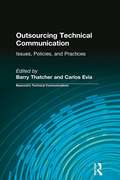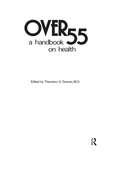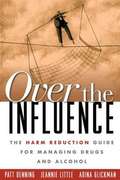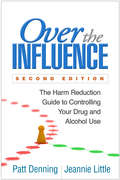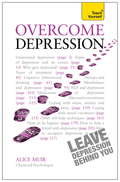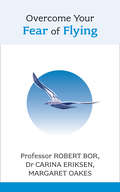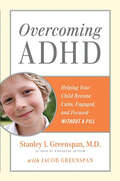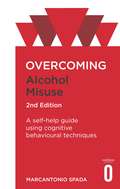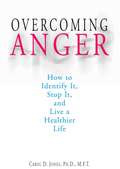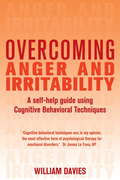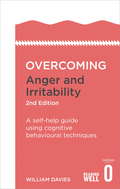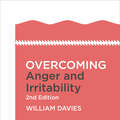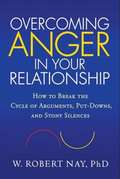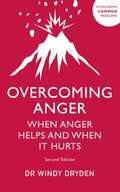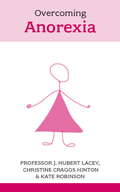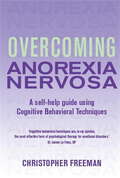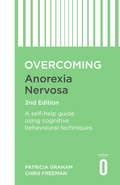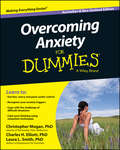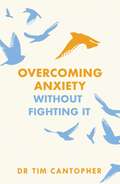- Table View
- List View
Outsourcing Technical Communication: Issues, Policies and Practices
by Carlos Evia Barry ThatcherThis book examines the impact of outsourcing on the field of technical communication. Aided by new technologies and driven by global market structures, technical communication products that were once developed in the United States or Western Europe are now being developed in Asia, Eastern Europe, and other parts of the world. If technical communication follows other fields, such as information technologies, electronics manufacturing, and even textiles, this 'outsourcing' of technical communication products and jobs will surely influence our profession-but how? What kinds of jobs will remain in the United States? Which jobs are more efficiently handled outside the United States? How can U.S. technical communicators develop a 'comparative advantage' in the global economy? How can collaboration and joint development of information products be managed? What are the ethical, cultural, social, and economic dilemmas created by outsourcing?This collection is designed as a theory/practice book that addresses the needs of graduate students, faculty, and technical communicators who want to teach, practice, or conduct research in this area. It addresses technical communications and outsourcing in six different parts of the world, including the United States. It also explores issues of curriculum, project management, legal considerations, and intercultural communication problems.This title is suitable for: Technical communication professionals in academia and industry; managers, researchers, and teachers of documentation projects who are involved in offshore outsourcing situations and need to find best practices, strategies, or recommendations for being successful; technical writers (freelancers and corporate employees) working with international partners interested in how outsourcing can affect the future of their profession; non-U.S. writers working in outsourcing projects looking to perform satisfactorily in their jobs; undergraduate and graduate professors in universities and community colleges teaching courses in publications management, information design, international communication, and technical writing, and students enrolled in those courses; teachers and students in rhetorical theory and professional communication pedagogy courses; ESL (English as a second language) and ESP (English for specific purposes) readers.
Over 55: A Handbook on Health
by Theodore. G. DuncanA study into the increasing needs of the population aged 55 years and over, by a group of experts, mostly physicians from Pennsylvania Hospital,Philadelphia; to explain in an understandable manner some of the medical, social, emotional, financial and legal matters that concern this age group.
Over the Influence
by Patt Denning Jeannie LittleTwelve-step programs that insist on abstinence are beneficial to many--but what about the millions of Americans who try to quit and fail, just want to cut down, or wish to work toward sobriety gradually? This groundbreaking book presents the Harm Reduction approach, a powerful alternative to traditional treatment that helps users set and meet their own goals for gaining control over drinking and drugs. The expert, empathic authors guide readers to figure out which aspects of their own habits may be harmful, what they would like to change, and how to put their intentions into action while also dealing with problems that stand in the way, such as depression, stress, and relationship conflicts. Based on solid science and 40+ years of combined clinical experience, the book is packed with self-discovery tools, fact sheets, and personal accounts. It puts the reader in the driver's seat with a new and empowering roadmap for change.
Over the Influence, Second Edition: The Harm Reduction Guide to Controlling Your Drug and Alcohol Use
by Patt Denning Jeannie Little"Just say no" just doesn't work for everyone. If you've tried to quit and failed, simply want to cut down, or wish to work toward sobriety gradually, join the many thousands of readers who have turned to this empathic, science-based resource--now thoroughly revised. A powerful alternative to abstinence-only treatments, harm reduction helps you set and meet your own goals for gaining control over alcohol and drugs. Step by step, the expert authors guide you to figure out: *Which aspects of your habits may be harmful. *How to protect your safety and make informed choices. *What changes you would like to make. *How to put your intentions into action. *When it's time to seek help--and where to turn. Updated to reflect a decade's worth of research, the fully revised second edition is even more practical. It features additional vivid stories and concrete examples, engaging graphics, new worksheets (which you can download and print for repeated use), "Self-Reflection" boxes, and more. Mental health professionals, see also the authors' Practicing Harm Reduction Psychotherapy, Second Edition.
Overcome Depression: Teach Yourself Ebook Epub
by Alice MuirAt any time, one in twenty people suffers from severe, clinical depression. If you or someone close to you may be one of them, this is book will be your perfect companion through your depression. No book can claim to 'cure' depression, which is a serious illness for which people should seek medical help. What this book does is demystify the illness, help remind you that you're not alone, provide moving case studies of people who have been in similar situations, and talk you through some practical things you can do to alleviate the effects of depression. It also explains the key treatments, including medication, cognitive behavioural therapy, and alternative therapies.
Overcome Your Fear of Flying: A Spiritual System To Create Inner Alignment Through Dreams
by Robert BorFear of flying is common, affecting up to 30% of the adult population, and can have disastrous social and professional consequences, spoiling holidays, damaging careers and putting relationships under stress. The good news is that this is one of the most treatable psychological problems. Overcome Your Fear of Flying, written by two psychologists and a pilot, looks at effective skills and techniques you can use to help reduce the anxiety commonly associated with flying.
Overcoming ADHD: Helping Your Child Become Calm, Engaged, and Focused -- Without a Pill
by Stanley I. GreenspanFrom the author of "Engaging Autism" and "The Child With Special Needs," an indispensible guide to overcoming attention and hyperactivity problems
Overcoming Alcohol Misuse, 2nd Edition: A self-help guide using cognitive behavioural techniques
by Marcantonio SpadaHow to regain control when alcohol is taking over your lifeStatistics show that misuse of alcohol is a very common problem. Using alcohol unwisely can have long-term effects on your health, career and family life. This self-help book helps you take a healthier approach to drinking.Using methods based on real clinical practice and proven cognitive behavioural therapy (CBT) techniques, this revised and updated edition shows you how to regain control of your alcohol consumption.
Overcoming Alcohol Misuse, 2nd Edition: A self-help guide using cognitive behavioural techniques (Overcoming Bks.)
by Marcantonio SpadaHow to regain control when alcohol is taking over your lifeStatistics show that misuse of alcohol is a very common problem. Using alcohol unwisely can have long-term effects on your health, career and family life. This self-help book helps you take a healthier approach to drinking.Using methods based on real clinical practice and proven cognitive behavioural therapy (CBT) techniques, this revised and updated edition shows you how to regain control of your alcohol consumption.
Overcoming Anger
by Carol D. JonesOvercoming Angerhelps you identify the roots of your anger and get it under control once and for all. Using cutting-edge techniques combined with a conversational approach, author Carol D. Jones, Ph. D. , M. F. T. , helps you turn your gaze inward and understand your individual anger style. You'll also develop a framework for managing your anger, and techniques for eliminating it altogether, such as: identifying your personal anger style and developing a plan making a commitment to change your life coping with everyday triggers to eliminate stress developing positive communication techniques listening actively rather than passively creating a personal responsibility assessment for your thoughts and actions and so much more Overcoming Angerprovides you with quizzes, checklists, and mediations designed to help you wipe out anger at its core. With these techniques, you'll finally be able to let go of your anger and live a happy and fulfilling life!
Overcoming Anger
by Carol D. JonesOvercoming Anger helps you identify the roots of your anger and get it under control once and for all. Using cutting-edge techniques combined with a conversational approach, author Carol D. Jones, Ph.D., M.F.T., helps you turn your gaze inward and understand your individual anger style. You'll also develop a framework for managing your anger, and techniques for eliminating it altogether, such as: identifying your personal anger style and developing a plan; making a commitment to change your life; coping with everyday triggers to eliminate stress; developing positive communication techniques; listening actively rather than passively; creating a personal responsibility assessment for your thoughts and actions; and so much more. Overcoming Anger provides you with quizzes, checklists, and mediations designed to help you wipe out anger at its core. With these techniques, you'll finally be able to let go of your anger and live a happy and fulfilling life!
Overcoming Anger and Irritability, 1st Edition: A Self-help Guide using Cognitive Behavioral Techniques (Overcoming Bks.)
by Dr William DaviesA Books on Prescription TitleTake control of your anger and improve your quality of lifeConstant irritability or flashes of bad temper can cause difficulties in relationships with friends, family or colleagues and leave us feeling unhappy and exhausted. If you find yourself struggling to control your rage and often regret inappropriate reactions, this book can really help. It explains clearly what provokes anger and what you can do to prevent it. Techniques based on cognitive behavioural therapy offer a positive approach with long-term goals in mind, and show how you can stay cool and successfully handle situations that would tax even the most easy-going person.Contains a complete self-help program and monitoring sheetsBased on clinically proven cognitive behavioural therapyFrom a trusted mental-health practitioner with experience in working with prisoners and those exhibiting extreme behaviours
Overcoming Anger and Irritability, 2nd Edition: A self-help guide using cognitive behavioural techniques
by Dr William DaviesConstant irritability or flashes of bad temper can cause difficulties in relationships with friends, family or colleagues and leave us feeling unhappy and exhausted. This fully updated and revised edition of William Davies' bestselling title is for anyone struggling to control their rage and regretting inappropriate reactions.It explains clearly what provokes anger and what we can do to prevent it. Techniques based on Cognitive Behavioural Therapy (CBT) offer a positive approach with long-term goals in mind and show how you can stay cool and successfully handle situations that would tax even the most easy-going person.Overcoming self-help guides use clinically-proven techniques to treat long-standing and disabling conditions, both psychological and physical. READING WELL This book is recommended by the national Reading Well Books on Prescription scheme for England delivered by The Reading Agency and the Society of Chief Librarians with funding from Arts Council England and Wellcome. www.reading-well.org.uk
Overcoming Anger and Irritability, 2nd Edition: A self-help guide using cognitive behavioural techniques (Overcoming Books)
by Dr William DaviesConstant irritability or flashes of bad temper can cause difficulties in relationships with friends, family or colleagues and leave us feeling unhappy and exhausted. This fully updated and revised edition of William Davies' bestselling title is for anyone struggling to control their rage and regretting inappropriate reactions.It explains clearly what provokes anger and what we can do to prevent it. Techniques based on Cognitive Behavioural Therapy (CBT) offer a positive approach with long-term goals in mind and show how you can stay cool and successfully handle situations that would tax even the most easy-going person.Overcoming self-help guides use clinically-proven techniques to treat long-standing and disabling conditions, both psychological and physical. READING WELL This book is recommended by the national Reading Well Books on Prescription scheme for England delivered by The Reading Agency and the Society of Chief Librarians with funding from Arts Council England and Wellcome. www.reading-well.org.uk
Overcoming Anger in Your Relationship
by W. NayHas your relationship become a battlefield? Does your partner's sarcasm, irritability, or hostility make you wonder where the closeness and trust have gone-and how much more you can take? If anger is poisoning your relationship, this book offers a powerful antidote. Anger expert W. Robert Nay provides clear-cut, practical techniques for responding productively to inappropriate expressions of anger. Learn how anger gains a foothold in a couple's life, why your usual responses may unwittingly reward bad behavior, and how to stand up for yourself in ways that promote lasting change. Self-quizzes and step-by-step suggestions for dealing with different types of angry behavior are illustrated with true-to-life examples. Grounded in psychological science, the strategies in this book are simple yet surprisingly effective. Try them for yourself-and for the person you love.
Overcoming Anger: How to Identify It, Stop It, and Live a Healthier Life
by Carol D JonesOvercoming Anger helps you identify the roots of your anger and get it under control once and for all. Using cutting-edge techniques combined with a conversational approach, author Carol D. Jones, Ph.D., M.F.T., helps you turn your gaze inward and understand your individual anger style.You'll also develop a framework for managing your anger, and techniques for eliminating it altogether, such as:identifying your personal anger style and developing a planmaking a commitment to change your lifecoping with everyday triggers to eliminate stressdeveloping positive communication techniqueslistening actively rather than passivelycreating a personal responsibility assessment for your thoughts and actionsand so much moreOvercoming Anger provides you with quizzes, checklists, and mediations designed to help you wipe out anger at its core. With these techniques, you'll finally be able to let go of your anger and live a happy and fulfilling life!
Overcoming Anger: When Anger Helps And When It Hurts
by Windy DrydenAre you struggling to control your anger? Feel like you're on a short fuse all the time? Do little things tip you over the edge? Unhelpful beliefs and rigid expectations can lead to a cycle of unhealthy anger, which can be dangerous and destructive. Windy Dryden draws a distinction between healthy and unhealthy anger, and shows you how you can control your unhealthy anger by understanding what triggers it. The good news is that you have the power to change this pattern, and to develop strategies to express your anger in a helpful way, so that you can communicate what you feel without scaring yourself, or those close to you. Practical, rational, strategic and supportive, this updated second edition contains the latest therapeutic insights, allowing you to make lasting and meaningful changes to the way you process your beliefs and manage overwhelming or destructive emotions.
Overcoming Anger: When Anger Helps And When It Hurts
by Windy DrydenAre you struggling to control your anger? Feel like you're on a short fuse all the time? Do little things tip you over the edge? Unhelpful beliefs and rigid expectations can lead to a cycle of unhealthy anger, which can be dangerous and destructive. Windy Dryden draws a distinction between healthy and unhealthy anger, and shows you how you can control your unhealthy anger by understanding what triggers it. The good news is that you have the power to change this pattern, and to develop strategies to express your anger in a helpful way, so that you can communicate what you feel without scaring yourself, or those close to you. Practical, rational, strategic and supportive, this updated second edition contains the latest therapeutic insights, allowing you to make lasting and meaningful changes to the way you process your beliefs and manage overwhelming or destructive emotions.
Overcoming Anorexia
by J. Hubert Lacey J. LaceyAnorexia is a distressing condition that commonly affects teenage girls but also touches women and men across all ages. As well as the physical dangers, sufferers experience difficulties in many aspects of their lives, including relationships, work and family life. Anorexia can be a serious condition - studies of severe hospitalised cases show that between 5 and 21 percent die, from starvation and suicide. Contrary to popular belief, however, 'once an anorexic, always an anorexic' isn't true - it is possible to beat anorexia and live a life where food, weight and shape play a more healthy and less dominant role.This book is aimed at sufferers, parents and partners, and points out how to recognise anorexia, and what to do about it. It deals with the physical and psychological features. The reader will be able to better understand the causes of anorexia and the anorectic mind. There is a strong emphasis on relieving the helplessness and anxiety felt by carers, with information on the nature of anorexia, treatment options and recovery. The book deals with how to access professional help. There are also practical suggestions to assist sufferers and their families overcome the condition.
Overcoming Anorexia Nervosa
by Dr Christopher FreemanOriginally developed as a manual for anorexia patients at his eating disorders clinic in the Royal Edinburgh hospital, Chris Freeman's is the first self-help book based on cognitive behavioural therapy to counter this most notorious and widespread of eating disorders. It occurs most frequently among young women, but affects both men and women of all ages, in all social groups, internationally. The first part of this groundbreaking guide provides an introduction to the subject of anorexia nervosa and its treatment using cognitive behavioural techniques for therapists, sufferers and their families. The second part is a self-help programme for recovery based on the treatment, which the author has used in his work with hundreds of patients. Cognitive Behavioural Therapy is a now internationally established method of treating emotional disorders such as anorexia, depression and panic by changing negative patterns of thought. The Robinson series of self-help guides based on CBT, written by practising clinical psychologists, has proved itself accessible and highly effective, and the series' reputation and sales increase with every year.
Overcoming Anorexia Nervosa 2nd Edition: A self-help guide using cognitive behavioural techniques
by Patricia Graham Dr Christopher FreemanBreak free from the vicious cycle of anorexia nervosaAnorexia nervosa affects both men and women, of all age groups and social classes, internationally. For both the sufferer and the friends and family who care for them, the impact of the illness can be devastating. However, it can be treated effectively using cognitive behavioural therapy (CBT).This self-help book provides support to battle this notorious and widespread eating disorder and has been used effectively with many patients in clinical settings. Using CBT techniques, you will learn to:Understand the many forms and causes of anorexia nervosaChallenge negative thinking and behaviourImprove your body imageDevelop coping strategies for the futureThese clinically proven tools form a complete recovery programme, with practical exercises and worksheets.Overcoming self-help guides use clinically proven techniques to treat long-standing and disabling conditions, both psychological and physical. Many guides in the Overcoming series are recommended under the Reading Well scheme.Series Editor: Professor Peter Cooper
Overcoming Anorexia Nervosa 2nd Edition: A self-help guide using cognitive behavioural techniques (Overcoming Bks.)
by Patricia Graham Christopher FreemanBreak free from the vicious cycle of anorexia nervosaAnorexia nervosa affects both men and women, of all age groups and social classes, internationally. For both the sufferer and the friends and family who care for them, the impact of the illness can be devastating. However, it can be treated effectively using cognitive behavioural therapy (CBT).This self-help book provides support to battle this notorious and widespread eating disorder and has been used effectively with many patients in clinical settings. Using CBT techniques, you will learn to:Understand the many forms and causes of anorexia nervosaChallenge negative thinking and behaviourImprove your body imageDevelop coping strategies for the futureThese clinically proven tools form a complete recovery programme, with practical exercises and worksheets.Overcoming self-help guides use clinically proven techniques to treat long-standing and disabling conditions, both psychological and physical. Many guides in the Overcoming series are recommended under the Reading Well scheme.Series Editor: Professor Peter Cooper
Overcoming Anorexia Nervosa: A Self-help Guide Using Cognitive Behavioral Techniques (Overcoming Ser.)
by Christopher FreemanA brand new cover for an invaluable self-help book on this life-threatening and widespread disorder
Overcoming Anxiety For Dummies - Australia / NZ: 2nd Edition (For Dummies Ser.)
by Laura L. Smith Charles H. Elliott Christopher MoganOvercoming Anxiety Without Fighting It: The powerful self help book for anxious people from Dr Tim Cantopher, bestselling author of "Depressive Illness: The Curse of the Strong"
by Tim CantopherYOU DON'T HAVE TO STRUGGLE WITH ANXIETY. WHETHER YOU DEVELOPED IT RECENTLY, OR YOU'VE BEEN LIVING WITH IT FOR YEARS, YOUR ANXIETY CAN BE TREATED. Expert psychiatrist and bestselling author Dr Tim Cantopher has helped hundreds of people just like you, and in Overcoming Anxiety Without Fighting It, he gives you tried and proven strategies for escaping the fear that stalks you. Discover a series of simple, manageable lifestyle skills and strategies that will make an immediate difference to your life, as well as practical suggestions for longer-term changes, including advice on how, when, and what sort of professional help to seek. At the heart of this warm, supportive and expert book are the author's decades of experience with people just like you, and with this experience comes a message of hope, and reassurance. Stick with the changes you are going to make, and seek the support you need, and your life will no longer be dominated by fear.'I'm speaking to you now - if you are going to gain the relief from your symptoms which I hope for you, you'll need to promise me and yourself one thing from the start: that you'll try your hardest not to judge yourself and how well or badly you're doing at getting better.' - Dr Tim Cantopher
